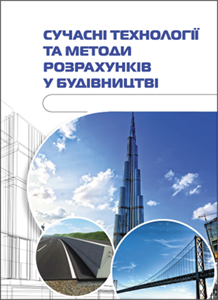Journals
-
Technological Complexes
Technological Complexes - scientific academic peer-reviewed journal.
Journal Specialties:
131 - Applied Mechanics;
151 - Automation and Computer-Integrated Technologies. -
Naukovi notatky
The collection of scientific works covers the results of experimental and theoretical research in scientific specialties: 105 Applied physics and nanomaterials; 113 Applied Mathematics; 131 Applied Mechanics; 132 Materials Science; 133 Industrial engineering; 151 Automation and computer-integrated technologies.
-
AGRICULTURAL MACHINES
The scientific achievements in the agricultural engineering and forestry are presented.
The journal is intended for science officers, lectures, PhD students and advanced students. -
Perspective technologies and devices

В збірник включені статті, що відображають наукові та практичні результати сучасних розробок технології машино- та приладобудування, інформаційно-вимірювальних технологій та телекомунікацій, електроніки; вимірювальної та радіотехніки, особливості експлуатації та повірки засобів вимірювань, медичних приладів і систем. Представленні сучасні досягнення та перспективні напрямки розвитку технології виготовлення та складання машин і приладів в різних галузях народного господарства.
Основні наукові спеціальності:
131 Прикладна механіка;
132 Матеріалознавство;
133 Галузеве машинобудування;
163 Біомедична інженерія;
171 Електроніка;
172 Телекомунікації та радіотехніка;
174 Автоматизація та комп′ютерно інтегровані технології;
175 Інформаційно-вимірювальні технології;
176 Мікро-та наносистемна техніка.
-
ADVANCES IN MECHANICAL ENGINEERING AND TRANSPORT

Advances in Mechanical Engineering and Transport is a peer-reviewed, open access journal that publishes original research articles as well as review articles in all areas of mechanical engineering, fundamentals of the transport system, technology for carrying passengers and freight, technology for multimodal transportation and logistics, agricultural motor vehicles, traffic safety and environment protection, design, manufacture and exploitation of motor vehicles, transport energetics, fuels, lubricants and maintenance materials, transport information technologies, transport economics and management, transport educology, and also, in areas of mathematical modelling and simulation of technical processes.
The journal is intended for practising engineers, academic and industrial researchers.
-
Modern technologies and methods of calculations in construction
У збірнику наукових праць «Сучасні технології та методи розрахунків у будівництві» / "Modern technologies and methods of calculations in construction" (MTMCC) висвітлюються результати наукових досліджень:
- будівельних матеріалів і конструкцій;
- технологій зведення та експлуатації будівель, інженерних і транспортних систем;
- теорії опору матеріалів, методів розрахунку;
- сучасних тенденцій проєктних рішень у будівництві;
- впровадження інформаційних та енергоефективних технологій.
Призначений для науковців, фахівців проєктних установ і виробничих підприємств, аспірантів та докторантів, викладачів і здобувачів вищої освіти.
Статті у збірнику наукових праць публікуються за спеціальностями:
- 113 – Прикладна математика
- 122 – Комп’ютерні науки
- 192 – Будівництво та цивільна інженерія
-
COMPUTER-INTEGRATED TECHNOLOGIES: EDUCATION, SCIENCE, PRODUCTION
Для того, щоб переглянути журнал натисніть ТУТ
-
Економічні науки. Облік і фінанси
Для того, щоб переглянути журнал натисніть ТУТ
-
Economic Sciences. Series "Regional economy"
Для того, щоб переглянути журнал натисніть ТУТ











